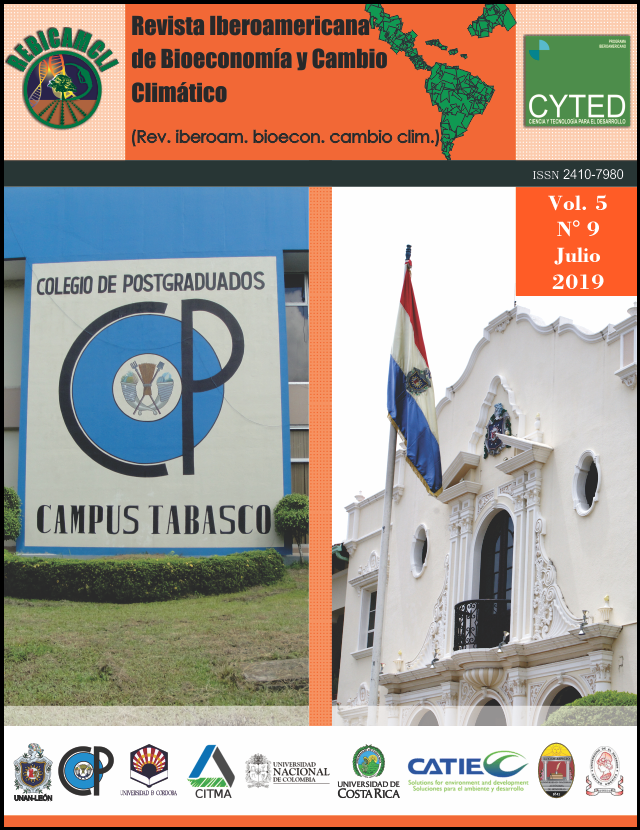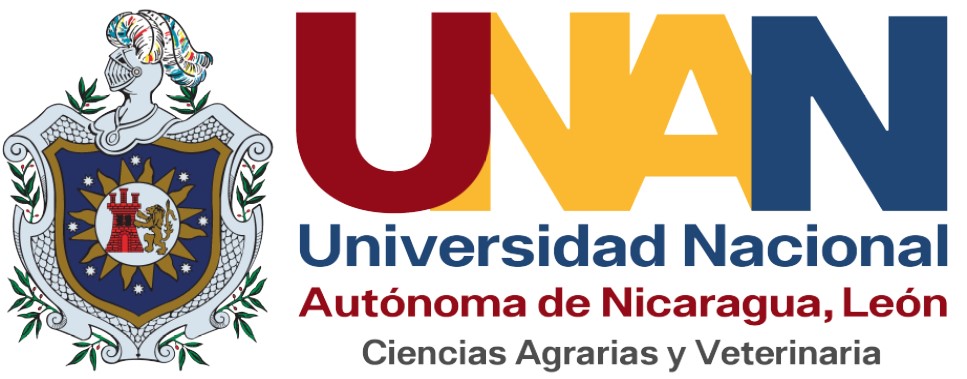Agro-ecological alternatives of fertilization in the cultivation of the pipián (Cucúrbita argyrosperma)
DOI:
https://doi.org/10.5377/ribcc.v5i9.7949Keywords:
Fertilization, Phenological, Agroecological, Edaphic, FoliarAbstract
The objective of this study was to evaluate three agroecological alternatives for fertilization (manure tea, coffee pulp and humus plus fish bone), in the cultivation of pipián (Cucúrbita argyrosperma) in the municipality of Jinotega, in the period August-October 2017. , likewise compare the influence of each fertilizer on the phenological development of the crop, determine the productivity of each fertilizer. The treatment that had better results experienced in the culture was manure, as it is characterized by the plant absorbs nutrients produced by the fertilizer (nitrogen, phosphorus, micronutrients) effectively.
Downloads
Metrics
References
Laguna, G y Cruz, J. 2006.Producción de semilla de pipian bajo estructuras protegidas. INTA, San Isidro.8 pp.
Acuña Perandrés, A. (2016). Pheidole pallidula como posible vector de polinización asistida en cultivos de calabacín (Cucurbita pepo L.).
CRM.(2009). Cuenta reto del milenio (CRM). Proyecto de desarrollo de la cadena de valor y conglomerado agrícola, Disponible en URL http://www.occidenteagricola.com/
Infoagro, 2003. Centro Nacional de Tecnología Agropecuaria y Forestal "Enrique Álvarez Córdova", El Salvador http://www.centa.gob.sv/html/ciencia/hortalizas/pipian.html
CENTA, 2002. Centro Nacional de Tecnología Agropecuaria y Forestal "Enrique Álvarez Córdova", El Salvador http://www.centa.gob.sv/html/ciencia/hortalizas/pipian.html
Lira, R., Villaseñor, J.L. & Ortíz, E. A proposal for the conservation of the family Cucurbitaceae in Mexico. Biodiversity and Conservation 11, 1699–1720 (2002). https://doi.org/10.1023/A:1020303905416
Sarita, V. 1991. Cultivo de hortalizas en trópicos y sub. Trópicos. Santo Domingo, DO. 231 p.
Alemán, F. 1986. Cultivo del pipian texto básico 1 edición ESAVE/UNA Managua, Nicaragua. P 164
Suarez, De Castro. "Relationships between rainfall and coffee production." Coffee 2 (1960): 85-90.
Uribe Henao, A., and N. Salazar Arias. "Influencia de la pulpa del café en la producción del cafeto." Cenicafè (Colombia) v. 34 (2) p. 44-58 (1983).
Downloads
Published
How to Cite
License
Copyright (c) 2019 Revista Iberoamericana de Bioeconomía y Cambio Climático

This work is licensed under a Creative Commons Attribution-NonCommercial-ShareAlike 4.0 International License.
Copyright © 2025 Rev. iberoam. bioecon. climate change. National Autonomous University of Nicaragua León (UNAN-León), Knowledge Area of Agrarian and Veterinary Sciences / Specific Area of Agroecology and Agribusiness / Center for Research in Agrarian Sciencies. Academic Directorate. Research Department. Publication and scientific events Unit.












 EDITORIAL
EDITORIAL e-ISSN
e-ISSN


 COPYRIGHT
COPYRIGHT This work is licensed under a Licencia Internacional
This work is licensed under a Licencia Internacional 












